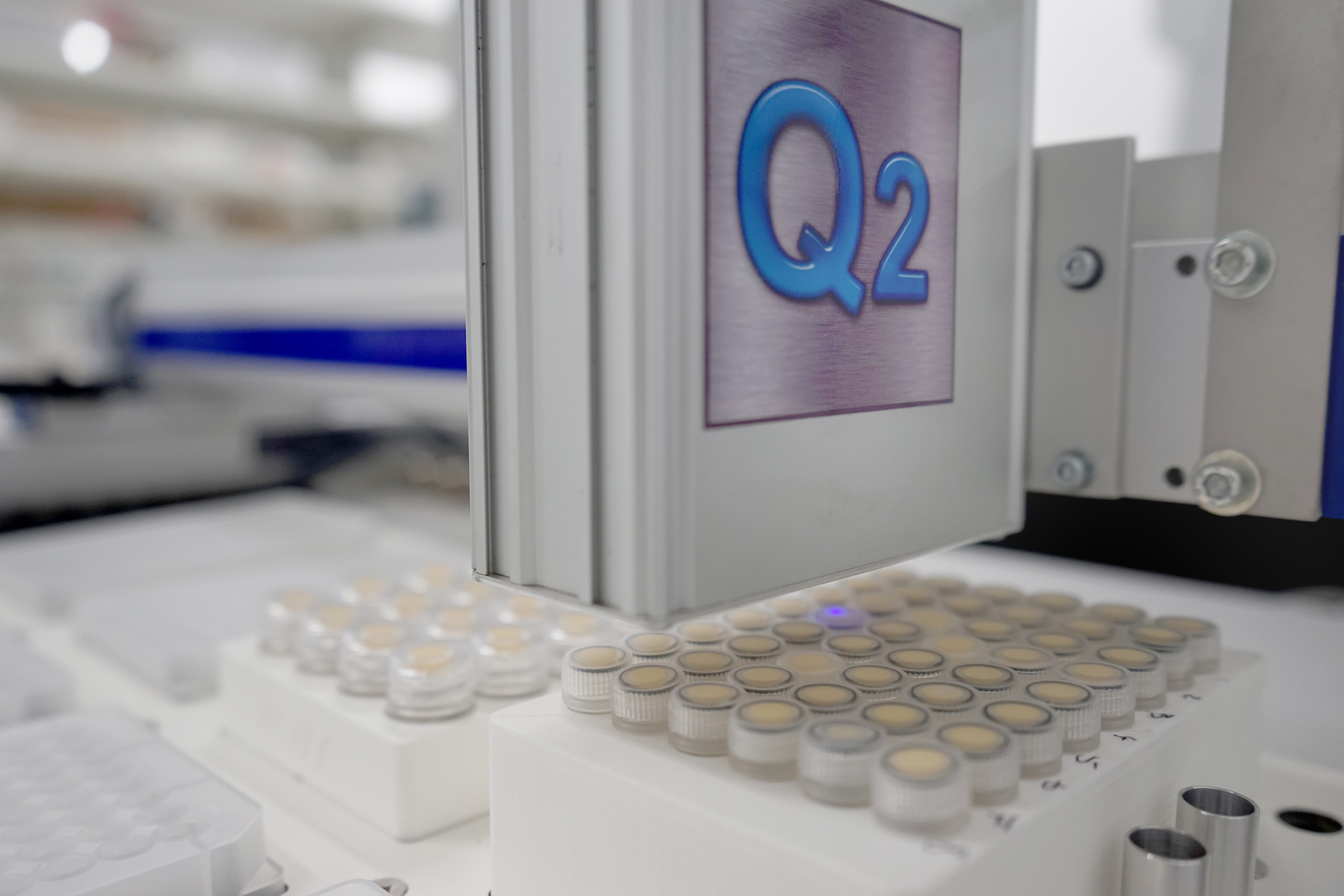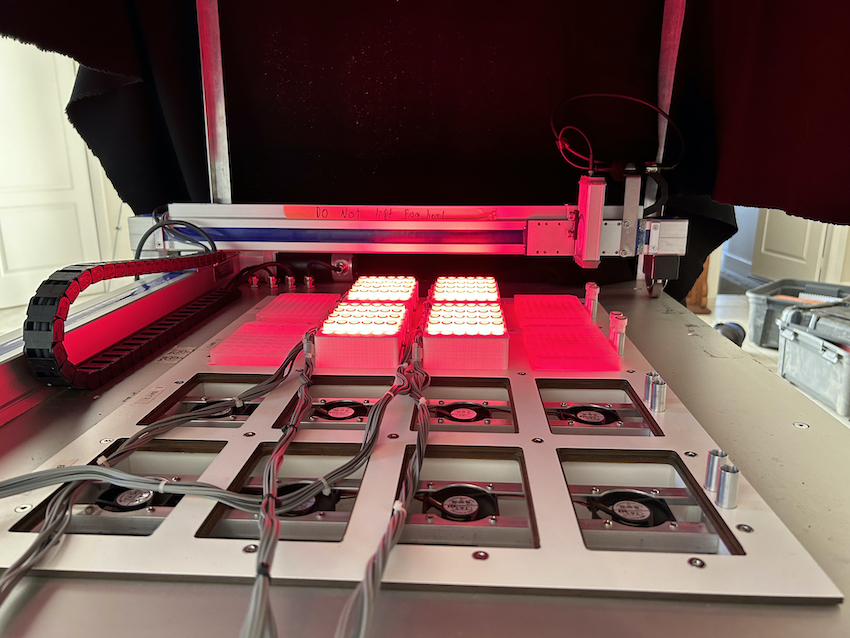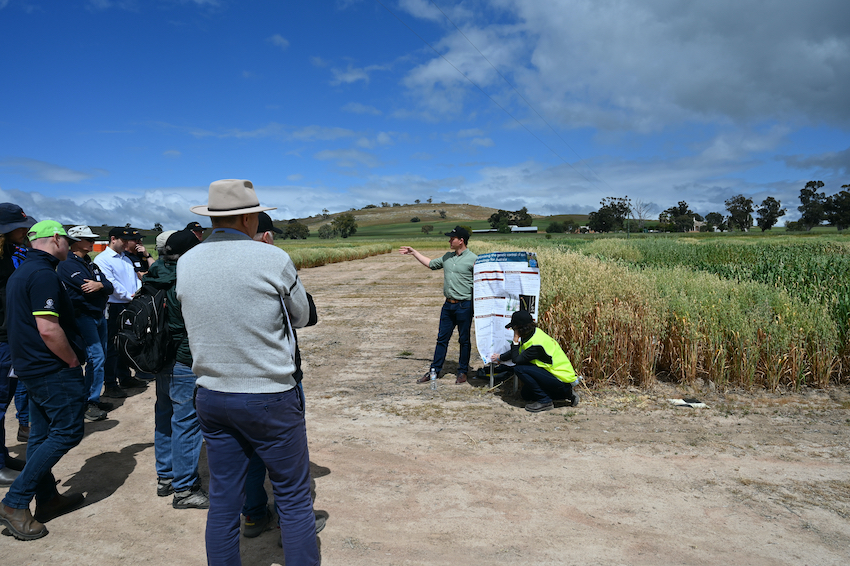Plants can adapt to the large changes in temperatures that occur during the day and across seasons. This intrinsic ability and its various biological pathways are now being targeted by four GRDC investments that are seeking new opportunities to breed for heat tolerance in wheat.
These in-depth dives into heat-responsive biochemical processes are being undertaken using highly diverse wheat populations. The contrast provided by susceptible and tolerant lines is being exploited to ultimately identify new traits as the researchers develop novel screening technology.
This trait discovery work aims to develop selection tools for use by commercial breeders, some of whom are in-kind partners to these projects. These selection tools could take the form of DNA markers or next-generation, high-throughput phenotyping tools, such as hyperspectral devices linked to machine learning algorithms.
Work towards these goals got underway in 2023 and an outline of each project will be provided over a two-part GroundCover series.
PROJECT 1: Leaf carbon exchange

New screening technology is targeting the energy balance in leaves between photosynthesis and respiration. Photo: Australian National University
For Professor Owen Atkin at the Australian National University (ANU), photosynthesis itself is the target but with one important caveat. He views photosynthesis within the framework of an energy balance between photosynthesis and respiration. This relationship dictates that plant growth and grain filling can only occur when energy production in the leaves (through photosynthesis) exceeds the base level of energy the plant must use just to survive (through respiration).
He can probe this balance in terms of uptake and use of two gases: carbon dioxide (which drives photosynthesis and sugar production) and oxygen (which drives respiration and uses up sugars).
“Both photosynthesis and respiration are temperature-sensitive biochemical processes,” Professor Atkin explains. “Our aim is to develop the ability to select for wheat lines that retain the ability to fix carbon dioxide into sugars at high temperatures while minimising carbon loss through respiration.”
Prior research has established that about 20 to 40 per cent of the output of photosynthesis is needed by wheat to maintain itself at moderate temperatures. These sugars are used by the respiratory pathway to make an energy-rich molecule, called ATP, in the cell’s mitochondria in a process that requires oxygen. The ATP then fuels processes such as cell division and maintenance.
The core problem for the plant is that high temperatures increase the energy cost for the plant to maintain itself. Important mechanisms include maintaining the integrity of cell membranes (that compartmentalise the cell’s contents) and the removal of misfolded proteins. As proteins turnover and membranes become leaky, more energy is needed to maintain the cell’s integrity.
“When the percentage of sugars needed by leaf respiratory processes hits 50 to 60 per cent, the plant is effectively no longer growing,” Professor Owen says. “That’s important because we know that yield is related to biomass at flowering. Heat-related growth retardation during the vegetative stages thus impacts yield.”
There is, however, known variation in wheat’s response to heat in terms of this energy balance. Professor Atkin’s goal is to acquire a mechanistic understanding of these differences.
The target of this work is a wheat collection that is the product of previous GRDC investments. It was put together from international material by Professor Richard Trethowan at the University of Sydney as part of his work with the CAIGE project (CIMMYT Australia ICARDA Germplasm Evaluation).
This material contains lines with observable variation in heat tolerance, but the reasons for these adaptations are not known. Professor Atkin will analyse 200 elite heat-tolerant lines in trials undertaken in partnership with commercial wheat breeding company InterGrain, along with several Australian and UK university partners.
To probe the energy balance between photosynthesis and respiratory rates, Professor Atkin is working up novel phenotyping approaches.
“When we screen the wheat population, we are trying to detect those lines that maintain photosynthesis at temperatures over 30oC and minimise carbon loss through respiration,” he says.
This involves techniques that can detect certain key responses, including:
- whether stomata remain open on leaves, thereby allowing the plant to take up carbon dioxide;
- how efficiently leaf photosynthesis can split an electron from water to create the energy needed to fix carbon dioxide; and
- the efficiency of the carbon fixing enzyme, RuBisCo (Ribulose-1,5-bisphosphate carboxylase/oxygenase).
Once again, prior GRDC investment – particularly in the International Wheat Yield Partnership– means that phenotyping technology has been worked up to probe these important biochemical processes in the laboratory. The new project will take these techniques to the next level.
Professor Atkin explains: “For this project to have impact, it is important that we work up technology to screen populations in a high-throughput fashion. So, part of our development work also involves engineering robotic platforms to screen for these energy balance traits.”
Included in the toolkit are technologies for measuring rates of carbon dioxide versus oxygen uptake. This work builds on past collaborations with the University of Western Australia. The technology allows testing of leaf fragments in sealed tubes that are laced with chemicals that fluoresce in ways that reveal rates of leaf gas exchange.

Novel high-throughput phenotyping technology is being developed to screen for heat tolerance in wheat. Photo: Australian National University
These measurements are taken robotically and are converted into an understanding of the balance between photosynthesis and respiration. The data can then be used to map back to genetic variations responsible for the differences (or QTLs). This could ultimately lead to DNA markers that select for lines that better maintain photosynthesis under heat stress while minimising carbon use through respiration.
A different technique is being used to probe RuBisCo activity. This enzyme builds sugars from carbon dioxide and it has the potential to remain active at temperatures as high as 45oC. However, RuBisCo requires an additional protein to activate, which is called RuBisCo activase.
Different versions of the activase protein are encoded by different genes. Importantly, the version of the gene that adapts wheat to heat is often silent and requires activation before it can maintain RuBisCo activity at high temperatures.
Variation in the ability to switch to the heat-tolerant form of RuBisCo activase presents another pathway for selecting more heat-tolerant germplasm. This trait is one that can be selected for using DNA markers.
“The potential of this mechanism was highlighted in work done by Australian researchers and Bayer using native Australian wild rice,” Professor Atkin says. “They found that this highly resilient species relies exclusively on the heat-tolerant activase gene, allowing the plant to thrive in Australia’s challenging northern climates.”
In addition, the imperative to develop high-throughput screening methods is seeing Professor Atkin and partners also scan all the trials using hyperspectral technology. This involves a device that clips on a leaf, emits light and then captures how the light is reflected by the leaf across many wavelengths.
Encoded in the reflected light are patterns that are indicative of the leaf’s metabolic and biochemical state. Analysing the data using machine learning approaches allows for comparisons against other datasets. This can culminate in the detection of light signatures that can serve as surrogate markers for complex heat-tolerance traits. This could come to include the respiratory versus photosynthesis traits.
Like all four heat tolerance projects, Professor Atkin has built a network of partnerships that allow him to tap relevant expertise as it is needed. Included among his international collaborators are the International Maize and Wheat Improvement Center (CIMMYT) in Mexico and the University of Essex and the University of Lancaster in the UK. Locally, he works closely with the University of Western Australia, the University of Sydney and the University of New England.
Additionally, 2024 will see the four projects align with regards to the best-performing wheat lines each team is processing. This will further boost the phenotypic data available as the wheat populations are processed for heat-tolerance characteristics across all four projects.
PROJECT 2: Intrinsic heat response pathways

Dr Scott Boden of the University of Adelaide. Photo: Sue Knight
Certain plants that are models for cultivated crops, such as Arabidopsis, are often used in early discovery work on heat responses as they are far easier to experiment on. Some of this work in recent years has made some interesting discoveries about heat stress responses.
For the past decade, Dr Scott Boden at the University of Adelaide has been keen to test whether the identified biochemical changes are relevant to wheat biology and represent opportunities to improve the heat tolerance of commercial wheat varieties.
“Mutants have been identified in model plants that don’t alter their biological processes as dramatically as wild type plants during heat events and carry on as if they are growing at cooler temperatures,” Dr Boden says. “What we want to know is whether this holds true in wheat and whether the biochemical responses can be used to select wheat genotypes that better tolerate heat.”
GRDC investment has made it possible for Dr Boden to explore three such biochemical responses.
1. Heat shock proteins
The heat shock work is the main focus of Dr Boden’s research activities. This involves looking at the responses of heat shock proteins that are activated during heat stress. This stress response generates chaperone-like proteins that protect against heat-related damage to the cell’s protein synthesis machinery.
1. Circadian clock
The work on the circadian clock is the main focus of project collaborator Dr Michael Haydon at the University of Melbourne. His experimental work builds on the finding that genetic variation for a plant’s response to seasonal changes significantly affects the way a plant responds to shifts in temperature. In turn, these variations can significantly affect the plant’s tolerance levels.
When those signalling networks were examined in the model plant Arabidopsis, overlaps were found between circadian cycle and the high temperature responses. This led to the discovery that ELF3, a circadian clock component, functions as a thermosensor, which complements its role in determining flowering time. Now, Dr Haydon will investigate whether the heat-sensiing role of ELF3 (and associated circadian clock genes) is conserved in wheat and barley.
3. GABA levels
Dr Sunita Ramesh at Flinders University is investigating the amino acid GABA. Emerging research suggests that GABA is a signal that regulates numerous normal developmental processes such as root growth, stomatal aperture and pollen tube germination. However, there is evidence it also responds to stresses such as aluminium toxicity and salinity.
Experiments in horticultural crops, such as cucumbers and peppers, found that providing GABA helps improve the plants’ response to heat stress. The mechanism appears to involve improved pollen viability.
Dr Ramesh will undertake an analysis on GABA in wheat to investigate opportunities to improve heat tolerance.
Screening for more-tolerant variants
In all, about 500 wheat lines will be analysed that potentially perform well under high growing temperatures. The majority of the collection are landraces and cultivars sourced from around the world. Included is material identified by the Industry Research Hub in Hot Dry Climates (now completed). However, elite cultivars recommended by global breeding programs have also been included.
Additionally, AGT is providing advice and assistance running the field trials as the project got underway in 2023.
“The ideal outcome is the identification of markers that cut through the complexity of biochemical responses to heat stress and present an economically feasible way for breeders to select for heat tolerance in wheat,” Dr Boden says.
More information: Scott Boden, scott.boden@adelaide.edu.au; Owen Atkin, owen.atkin@anu.edu.au

























































